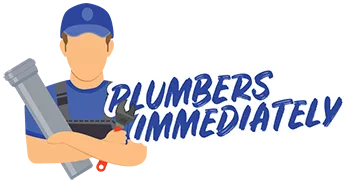Blocked outside drains can be frustrating and inconvenient, but they’re usually easy to fix with the right approach. In this guide, we’ll walk you through how to identify and unblock an outside drain, explore the different types of outdoor drainage systems and give you tips on preventing future blockages.
What Are Outside Drains?
Outside drains are an essential part of your property’s plumbing system, designed to carry away water from your roof, yard, or kitchen. They help prevent flooding, waterlogging and damage to your home’s foundations. Typically, outside drains are located around patios, driveways, or near your kitchen’s waste pipes.
The primary function of an outside drain is to remove wastewater and rainwater from your property. These drains can, however, become blocked due to debris such as leaves, dirt, grease, or even tree roots, which can lead to water backup and flooding.
Types of Outside Drains
Understanding the type of outside drain on your property can help you manage it effectively and address potential blockages.
Surface Water Drains
These drains are designed to carry away rainwater from roofs, driveways and patios. They often collect water from gutters and downpipes and direct it away from your home’s foundations. Surface water drains can easily become blocked with leaves, soil and other outdoor debris.
Foul Water Drains
Foul water drains carry wastewater from your home (kitchen sinks, washing machines, toilets) to the sewage system. Blockages in these drains can be particularly unpleasant due to the type of waste they handle. If you have a blocked kitchen drain outside, it's likely connected to a foul water drain.
Combined Drains
These drains handle both surface and foul water in one system. While this might seem efficient, it can increase the risk of blockages, as they deal with multiple sources of debris.
What Causes a Blocked Outside Drain?
Understanding what causes a blocked outside drain will help you prevent future issues. Here are some of the most common causes:
- Leaves and debris: Outdoor drains, especially those in gardens or driveways, often get clogged by leaves, dirt and twigs.
- Fat and grease: Blocked outside kitchen drains can be caused by grease and fat buildup from washing dishes. Over time, this fat solidifies in the drain and causes blockages.
- Tree roots: In some cases, tree roots can grow into drainage pipes and cause severe blockages that require professional help.
- Foreign objects: Items like toys, stones, or even dirt can accidentally end up in your drains, causing clogs.
Signs of a Blocked Outside Drain
Before you can fix the problem, it’s important to know when you’re dealing with a blocked outside drain. Here are some tell-tale signs:
Water Pooling:
One of the most obvious signs is standing water that won’t drain away, often seen around garden drains or patios.
Slow Drainage:
If the water from your kitchen sink or outdoor tap is slow to drain, there could be a blockage.
Foul Odours:
A nasty smell coming from an outside drain could indicate decomposing debris that’s clogging the pipes.
Overflowing Drains:
If water is bubbling up from the drain or your outside kitchen drain is overflowing, it’s time to act quickly.
How to Unblock Outside Drains
There are several ways to clear a blocked outside drain, depending on what’s causing the blockage. Here’s a breakdown of the most effective methods:
1. Use Drainage Rods
Drain rods are one of the most effective tools for unblocking an outside kitchen drain or garden drain. They’re long, flexible rods that can be screwed together to form a longer rod that will reach into the drain.
How to use drain rods:
- Wear gloves and protective clothing to avoid contact with dirty water and debris.
- Remove the drain cover (you may need a screwdriver or a specialised tool).
- Slowly insert the rods into the drain and twist them clockwise. This will help break up any blockages.
- Push the rods as far as they’ll go, adding more rods if necessary to reach deeper.
- Once you feel resistance, twist and push the rod back and forth to dislodge the blockage.
2. Flush the Drain with Water
For minor blockages, a pressure hose or garden hose can do wonders to unblock an outside kitchen drain.
How to do it:
- Insert the hose into the blocked drain and turn the water on at full pressure.
- Move the hose around inside the pipe to dislodge debris.
- Continue flushing the drain with water until the blockage is cleared and water flows freely.
This method works particularly well for clearing out leaves, silt, and small debris that may be causing the blockage.
3. Try a Drain Unblocker Chemical
If you’ve tried rods and water with no success, chemical unblockers can break down stubborn grease or fat in your drains. You’ll often find blockages in blocked kitchen drains outside are caused by grease buildup, especially if it’s near your kitchen sink.
How to use drain unblocker chemicals:
- Choose a chemical unblocker designed for outside drains.
- Carefully pour the chemical into the blocked drain, following the manufacturer’s instructions.
- Allow it to sit for the recommended amount of time (usually 15-30 minutes).
- Flush the drain with hot water to help dissolve any remaining blockage.
Note: Be cautious when using chemical unblockers, as they can be harmful if not handled properly. Always wear gloves and goggles.
4. Plunging the Drain
If you’re dealing with a blocked outside kitchen drain or outside kitchen drain overflowing, a plunger might be all you need. It’s an easy, non-invasive way to unblock outside drains.
How to plunge a drain:
- Make sure the plunger cup fully covers the drain opening.
- Push the plunger down firmly and then pull it up sharply. This creates a vacuum that can dislodge the blockage.
- Repeat the process several times, checking to see if water starts draining.
This method works best for partial blockages or blockages caused by food or debris near the drain opening.
Preventing Outside Drain Blockages
To keep your drains free-flowing, regular maintenance is key. Here are some tips on how to avoid future blockages:
- Use drain covers: Place covers over your outside drains to prevent leaves and debris from falling in.
- Regular cleaning: Clean your drains every few months using a hose or pressure washer to remove any small blockages before they become bigger problems.
- Be mindful of what you wash down: Avoid pouring grease, fat, or food waste down your kitchen drain as these can solidify in the pipes and lead to blockages.
- Keep your garden tidy: Rake leaves and clear debris regularly to avoid them ending up in your outdoor drains.
When to Call a Professional
Knowing how to unblock outside drains can save you time, money, and stress. Whether you’re dealing with a blocked outside kitchen drain, an overflowing drain, or a minor clog, following these DIY methods should help you get the water flowing again.
If you’ve tried everything and the blockage won’t budge, don’t hesitate to call a professional to prevent more serious damage. For everyday issues, though, you now have all the tools and know-how to tackle it yourself!
While most blockages can be fixed with DIY methods, sometimes the problem is more severe, such as when tree roots are involved or if the blockage is deep in the drainage system. If you’ve tried the methods above and your drain is still clogged, it might be time to call in the professionals. They can use specialised tools, such as CCTV drain inspections, to locate and fix the blockage.


